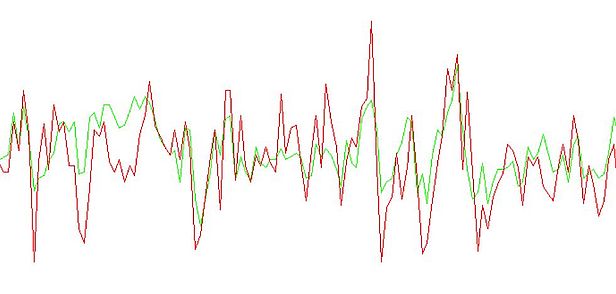From tree rings to calendar years
WSL researchers have assigned the tree rings on this disc to specific calendar years. To achieve this, they matched the growth pattern of this larch with those of other larches.
In this disc, the felling date of the tree was known. However, this date alone is not enough to assign each tree ring to a calendar year. Indeed, in unfavourable years, tree rings may be partially ("wedging rings") or completely absent ("missing rings") in individual trees.
To solve this, WSL researchers compared the sequence of ring widths of this larch with a regional reference sequence - a reference chronology. This basic principle of tree-ring research is known as "crossdating".

For our larch, WSL researchers used a regional reference chronology consisting of many already measured and crossdated tree-ring curves from living trees in the Goms valley (Valais). In order to extend this chronology as far as possible into the past, they also used measurements from dated wooden beams from old houses in the same valley. In this way researchers were able to build a reference chronology of almost 1,500 years.
Not only does examining millennia-long tree-ring curves allow us to correctly assign tree rings to calendar years using crossdating, but it also lets us investigate past tree responses to environmental factors such as climatic fluctuations and larch budmoth outbreaks. Dated tree rings are therefore an important environmental archive.

